

For International Women’s Day, SCS decided to interview one of our own, Nicole Kron, who is a Hydrogeologist in Madison, Wisconsin. Nicole joined SCS Engineers in December 2017, as a project professional in the Environmental Services practice. Nicole graduated with her Bachelors of Science in Geology from the University of Illinois and earned her Masters of Science in Hydrogeology from Illinois State University.
Early in her career, prior to working at SCS, she did a lot of fieldwork – characterizing sites, determining where there might be issues of contamination that would need to be cleaned up, drilling and installing wells, collecting groundwater and soil sampling and just getting an understanding of the geology of the site.
Nicole now focuses more on the evaluation and preparation for the fieldwork. Once the fieldwork is completed, Nicole conducts the evaluation of the lab data that comes back and a groundwater analysis if needed. Based on the data they receive, whether it’s groundwater data or soil data or any other medium, she performs evaluations for what that means for that site. She then develops reports that explain the geology and hydrogeology of the site, the extent of contamination, and what are the next steps, whether that be to close the site or needing to do more work to better define the issue. She assists in a lot of those different areas and helps with managing the reporting and analysis of the findings.
Prior to coming to SCS Engineers, I had worked with two other firms. They were good firms but did not always have the warmest culture. I had a friend who worked in the SCS Engineers’ Madison office and mentioned that he enjoyed working for SCS and encouraged me to apply. There’s always going to be challenges and difficult times wherever you work. What I appreciate about working at SCS Engineers is that when there are those challenges, or if I’m having a tough day, there is still an environment of support at SCS and a desire for everyone to achieve their goals. SCS Engineers has the best work culture I’ve ever worked in!
Working with my team! I also love that I have the opportunity to develop my own career path and can contribute to finding solutions to issues we encounter while working on projects. I always feel respected and not just a “cog in the wheel,” but a part of the team. I appreciate that my work is valued here.
This is hard to answer! I’m a part of such a great team and am able to do a lot of work for some of our bigger clients in the Midwest. I’ve also taken over as the local SCS Young Professionals Leader for the Upper Midwest, where I help arrange meetings and lead discussions. I work on ways to help the YP’s feel like a connected group, supported while learning new skills, and improving work environments.
We all have different personalities and strengths to our personalities. There are no personality types that are designed for one type of career. For example, I’m an extrovert and like to collaborate with other people. But, not everyone is an extrovert and may take on challenges differently than I do. On the DiSC chart of personalities, I am a solid “iD,” which means I like to be high-spirited and enthusiastic and am also strong-willed. It’s good to recognize everyone has different strengths and weaknesses, and learning what works and doesn’t work for your team.
Surprisingly, there were! It was fairly balanced. Many of the women that I attended school with have gone into a variety of fields since graduating – Oil and Gas, government and state agencies, and a few went into environmental consulting. I do see an increase in women joining the environmental field, which is exciting! Most are just starting off in their careers, but I think it’s great that hopefully there will continue to be more women in STEM fields!
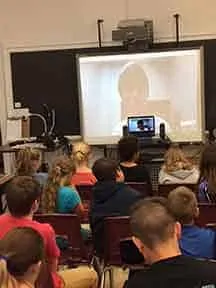
The non-profit organization was started by a graduate student who wanted to ensure that science would continue beyond just the classroom and that students could see scientists as well-rounded people. Scientists are paired up with a classroom over a Skype video conference, and the students can ask questions about the scientist’s work and why they chose their career path. It’s a great opportunity for students to see what scientists are like and what they do. The founder of the program wanted to make sure students would see more of a scientist than the stereotype of a person with a lab coat and goggles on, mixing chemicals all day.
I’ve participated in two sessions – a 4th-grade class and a 10th-grade class. The 4th graders were from Canada, wanted to talk about volcanoes, and where they could find diamonds! The 10th-grade class happened to be an all-female class. They were excited to learn that I was a dancer and used to perform in plays and on the speech team in college. We also talked about how it is okay to fail sometimes and to recognize failure as part of the journey in your career and in life. Failure is part of being a scientist. If your experiment fails, you can’t just give up. You have to try something new! It was great to be able to remind your students that it’s okay to fail sometimes as long as you learn how to work through it.
Don’t discount opportunities to learn something that would be applicable to your field. When I was finishing my Masters, I had an opportunity to take a class that would give me the foundational understanding in this field, but I elected not to take it because I did not believe I would go into environmental consulting. Now I’m working in this field! Yes, it was one class and didn’t hinder my abilities to get a job or do my job today, but you never know what may be in store for you in the future. If you have an opportunity to learn something new, try it anyway! This should go beyond STEM as well. If you have a chance to learn, do it!
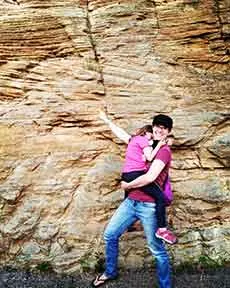
As a woman in the environmental field, sometimes you are the minority, but that’s not a bad thing. You are there to contribute and to be a part of a team. It shouldn’t matter the color of your skin, how old you are, or what gender you associate with.
Remember that your voice is just as important as everyone else’s! Be ready to listen and learn. Your voice has just as much power and meaning as any other person in the room.
I love to knit, go camping, and kayaking! I also really love to go dancing! I used to take ballroom dance classes when I was younger, so I take any opportunity I have to go dance!
Interview by Lindsay Evans, SCS Engineers Human Resources
SCS Engineers welcomes Ben Reynolds, to our Little Rock, Arkansas office. Mr. Reynolds joins the SCS environmental services team providing support to real estate developers, construction firms, and industrial clients in the region. These businesses need to manage air, water, and soil safely within federal and state policies as they operate.
Ben is a Professional Engineer in Arkansas, Oklahoma, and Tennessee. He comes to SCS Engineers from the Arkansas Division of Environmental Quality (DEQ), where he served as the technical branch manager for Assessment and Remediation and in the Hazardous Waste Division as a permit engineer. His expertise and working knowledge from the DEQ is valuable to clients who need support to obtain multiple permits and to complete successfully Brownfield and other voluntary remediation projects.
Working as an environmental engineer, Ben gained experience helping clients with Phase I and Phase II environmental site assessments, Spill Prevention, Control, and Countermeasures (SPCC) Plan, and Storm Water Pollution Prevention Planning (SWPPP). These assessments and plans keep businesses compliant with environmental federal and state regulatory policies. Ben approaches each project analytically, mitigating the financial risk and future liability through careful evaluation, analysis, and planning that protects clients and the environment during all phases of redevelopment or production.
Ben also has experience with real-time telemetry for directional drilling, assisting with well completions, and the production of oil and natural gas. Telemetry is useful in many industries for collecting measurements and other data at remote or inaccessible points. These systems complement SCS’s technologies, SCSeTools® and SCS RMC®, to help streamline monitoring, auditing, and record-keeping, which reduce the cost of operations and of maintaining environmental records. His experience complements and enhances SCS’s Oil & Gas and SCS’s Energy practices too.
Ben earned his Bachelor of Science in Mechanical Engineering at the University of Arkansas. His supplemental professional education includes Establishing Energy Metrics, Closure Cost and Financial Assurance, Resource Conservation and Recovery Act (RCRA), RCRA Sampling Techniques, and Stack Sampling. He is certified as an STI/SPFA SP001 Aboveground Tank Inspector; with OSHA Hazardous Waste Operations and Emergency Response (HAZWOPER) 40-Hour Certified.
“Ben’s a valuable resource for our clients,” stated Dan McCullough. “We’re happy to welcome another SCS member with strong analytical skills and the expertise to resolve complex environmental challenges.” The SCS Engineers Little Rock office supports the growing demand for environmental scientists, engineers, and consultants. SCS professional staff specializes in meeting federal, state, and local clean air, water, and soil goals, and the restoration of property once thought impractical to revitalize.
CCR – Disposal Regulation Revisions & Permitting Program by the U.S. Environmental Protection Agency moves forward on two matters that proposed to revise its 2015 solid waste regulations for the disposal of coal combustion residuals.
On February 19, 2020, EPA announced what it said is the last of planned actions to implement the Congressional mandates, respond to petitions, address the results of litigation, and apply lessons learned to ensure smoother implementation of the regulations. In a rulemaking entitled “A Holistic Approach to Closure Part B,” EPA proposed the following revisions:
One of the proposed options for allowing the use of CCR for closure activities would allow coal ash to be moved between units at the same facility and consolidated at impoundments that are scheduled for closure. The second option would allow utilities to beneficially use coal ash in disposal unit closure activities.
Under the proposed rule, utilities would need to submit an alternative liner demonstration within 13 months of the final rule, with the possibility of extensions. The EPA noted there would likely be few basins able to meet the alternative liner requirements.
The proposal would also allow utilities to continue disposing ash into some ponds even after the pond has been scheduled for closure. Ponds will still be able to take in ash if the ash remains under a certain volume — and this includes ponds located in unstable areas, such as in a seismic zone or within five feet of a waterway.
EPA will seek comment on this proposal during a 45-day public comment period that will commence when it is published in the Federal Register. EPA will also hold a virtual public hearing on the proposal on April 9, 2020.
On February 20, 2020, EPA’s previously announced proposed rule to establish a Federal CCR Permitting Program was published in the Federal Register. The creation of a federal permitting program for coal ash disposal regulations was required by Congress in the 2016 Water Infrastructure Improvements for the Nation (WIIN) Act, which shifted enforcement authority for EPA’s disposal standards from citizen lawsuits to state environmental regulators. The federal permit program is intended for use in states that do not seek EPA approval for their own programs and for use in Indian Country.
The proposed federal program includes electronic permitting and sets requirements for permit applications, content and modification, as well as procedural requirements.
EPA will accept public comment on the proposed program until April 20, 2020. The agency will also hold a virtual public hearing on the matter on April 15, 2020.
Media reports of the announcements included coverage by The Hill, E&E News, Utility Dive, Phoenix Newsletter, and a pair of stories by Bloomberg.
The World Health Organization and UNICEF estimate that one in three people globally lack access to safe drinking water. In Wisconsin, three non-profits are tackling this life-threatening problem, especially in hard-hit Sierra Leone in western Africa.
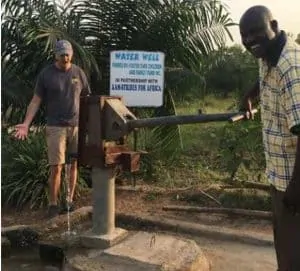
Geological Engineer Chris Jimieson of SCS Engineers leads the non-profit organization Strides for Africa. Maria Nicholas-Groves leads Feeding Mouths Filling Minds, and Project1808 founded by Sierra Leone native Dr. Alhaji N’jai work in unison helping to construct the school in Sierra Leone’s Koinadugu District. The school will help the surrounding community learn about resource conservation and help alleviate life-threatening conditions. Of particular importance is sustainable infrastructure such as well construction to produce clean drinking water.
Recently, CBS Sunday Morning, hosted by Michael Schlesinger, highlighted their work to improve access and save lives. See the feature on the CBS site.

SCS has completed numerous mold surveys for a variety of facilities, such as schools, offices, warehouses, industrial, and commercial buildings. We do not recommend a mold survey if you observe mold — if you can see it, you have a mold issue. Mold is ubiquitous and requires water and food to grow, so if you observe mold growth, the first step is to stop the source of water.
Exposure
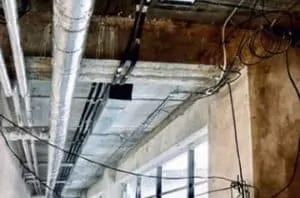
There are no promulgated governmental exposure limits for mold, as every individual responds differently to the presence of mold. Mold surveys are typically performed after the water leak has been repaired, and the water damaged building materials have been replaced. This post-remediation survey lets you know if the cleanup has been successful and the area is safe to occupy.
If tenants are complaining of moldy or musty odors, a survey can tell you if you have a mold problem even if there is no visible growth. Mold can be present inside walls, air ducts, and false ceilings, behind cabinets, beneath flooring, for example. Successful survey results will show lower levels of mold spores inside the building compared to the outside sample results, with low to absent levels of concern.
Survey Process
SCS performs indoor air quality or IAQ, mold surveys using the newest battery-powered Zefon Bio-Pump® Plus, which collects an air sample for mold analysis in as little as 5 to 10 minutes, with an auto-shutoff feature once the sample is collected. Typically, a minimum of six samples are recommended, three inside and three outside, with the total number of samples dependent on the size and complexity of the affected area.
We transport the sample cassettes to a certified laboratory under the chain-of-custody protocol for mold spore analysis, with results typically available within 2 to 5 days. Rush analysis is available for an additional cost (same day service is dependent on the time of sample delivery to laboratory). Laboratory analytical reports may include spore counts for approximately 20 types of mold, total count comparisons; background count comparisons; explanation of results with descriptions of the individual spore types; references, and informational links.
Costs
Typical costs for a mold survey range from $2,500 to $10,000, depending on the location, size, and complexity of the survey area. As soon as the review of the laboratory report is complete, SCS provides verbal results, with a technical report typically issued within 10 business days of receipt of laboratory data. Most mold inspection firms utilize technician level workers. Having oversight by a certified industrial hygienist, SCS ensures the most complete and comprehensive survey appropriate to the needs of landlords and owners of commercial buildings and multi-residential dwellings.
If you’d like more information or have questions, please contact Jed Douglas, CIH, CSP, PG, Senior Project Advisor at SCS Engineers, or contact SCS at for an Occupational Health and Safety professional nearest you.
Mr. Douglas is a Senior Project Advisor specializing in Occupational Health and Safety Programs. He is a Certified Industrial Hygienist (CIH), a Certified Safety Professional (CSP), a licensed Professional Geologist in California, Oregon, Washington, and Arizona, and a U.S. Green Building Council LEED Accredited Professional. He has over 25 years of experience as a health and safety specialist and senior project manager, and has managed numerous environmental projects involving safety; soil and groundwater investigations and remediation of hazardous constituents; and, indoor air quality (IAQ) assessments for physical, chemical, and biological contaminants.
SCS Engineers has expanded into Green Bay to increase our municipal solid waste and electric utility customer support in the Green Bay/Fox Cities area.

Contact Jared via email at or call 608-216-7348. Thank you for your continued trust in SCS Engineers. We look forward to meeting your engineering and environmental compliance needs.
Joseph Dinan heads the SCS Engineers new office at 101 Arch Street, Boston, MA 02110,
Tel: 857-444-6302
SCS Engineers opened a new office in Boston’s Downtown Crossing district. The new location is more convenient for clients and enhances support to the firm’s growing client base in New England.
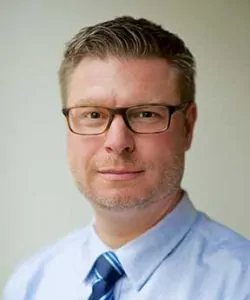
Joseph Dinan, an accomplished project manager and senior scientist heads Boston’s SCS team. Dinan has an excellent record meeting regulatory compliance and accountability for his clients to efficiently permit projects, keep them on budget and maintain the redevelopment schedule while meeting all environmental guidance. His background includes applied sciences including chemistry, microbiology, and environmental and soil sciences. Dinan has successfully managed hundreds of environmental assessment and remediation projects, both domestically and internationally.
Dinan’s Boston team resolves complex environmental challenges through the application of comprehensive analytical skills and technologies. Approaching each project with decades of expertise, mitigating the financial risk through careful assessment, analysis, and planning protects clients and the environment during all phases of redevelopment.
The Boston location supports the growing demand for environmental scientists, engineers, and consultants. SCS professional staff specializes in meeting federal, state, and local clean air, water, and soil goals, and the restoration of property once thought impractical to revitalize. The firm also provides vapor intrusion systems for protecting existing properties and a range of comprehensive environmental services for public and private entities.
As with most established urban environments, many properties may have previously been industrial or mass transportation sites, which often means that extra care is taken during redevelopment. Commercial real estate transactions must take environmental issues into consideration. Complex laws can impose significant environmental liabilities on purchasers, sellers, and lenders, whether or not they caused the problem, and whether or not they still own the property.
Important rules published by the U.S. Environmental Protection Agency – USEPA and in Massachusetts and other states offer defenses against environmental liabilities provided that the defendant conducted “all appropriate inquiries” regarding the property at the time of the acquisition, and then took reasonable steps to mitigate the effects of hazardous substances found on the property.
For more information, case studies, events, and articles visit these pages:
The Department of Toxic Substances Control (DTSC), State Water Resources Control Board, and San Francisco Bay Regional Water Quality Control Board have developed supplemental vapor intrusion guidance for conducting vapor intrusion evaluations in California. The Draft Supplemental Guidance: Screening and Evaluating Vapor Intrusion is available for review and public comment until 12:00 noon, April 30, 2020. Click here for available public meetings and comments.
According to the published Draft Supplemental Guidance: Screening and Evaluating Vapor Intrusion Executive Summary
Background
Toxic vapors can move from contaminated groundwater and soil to indoor air. This process is called vapor intrusion. Vapors inside buildings can threaten human health. The science behind vapor intrusion has been evolving quickly. To protect the health of Californians, the DTSC and the California Water Boards drafted a supplement to the existing vapor intrusion guidance. This is important information to collect for environmental protection. This document is called the “Draft Supplemental Guidance: Screening and Evaluating Vapor Intrusion” (Draft Guidance). This Draft Guidance contains recommended improvements for vapor intrusion investigations and promotes consistency throughout the state. It also offers suggestions on the following topics:
The Draft Guidance is intended to be used with existing State guidance – DTSC 2011 Vapor Intrusion Guidance and San Francisco Bay Regional Water Board 2014 Interim Framework 1 – when there is a spill or disposal of vapor-forming chemicals. This guidance does not apply to any leaking petroleum underground storage tanks (USTs) since they are governed under the State Water Resources Control Board’s Low-Threat UST Case Closure Policy.
Four Steps to Evaluate Vapor Intrusion
The Draft Guidance describes four recommended steps to decide if there is vapor intrusion that could pose a risk to the health of people inside buildings. These actions are meant to protect public health and should be carried out under the oversight of the lead regulatory agency.
Step 1 – Decide which buildings should be tested first and how.
When there are several buildings, start with those that are occupied and closest to the contamination. If a building is directly above or very close to the spill, or if it is likely that the sewer could bring toxic vapors inside, skip Step 2 and go directly to Step 3.
Step 2 – Screen buildings from outside.
Measure vapor-forming chemicals underground at these locations:
Step 3 – Test indoor air.
Measure vapor-forming chemicals in indoor air, beneath the building’s foundation, and outdoor air at the same time:
Step 4 – Act to protect public health.
Toxic Vapors Can Travel Through Sewer Pipes
Vapor-forming chemicals can enter sewer pipes that run through contaminated soil or groundwater. Once inside a sewer, vapors can move through the pipes and escape through cracks or openings, under or inside a building. Some of the traditional ways to test for vapor intrusion could potentially miss vapor-forming chemicals moving through sewer pipes. This Draft Guidance recommends evaluating whether the sewer could bring toxic vapors inside.
Vapor Intrusion Attenuation Factors
Attenuation factors are used to estimate how much of the vapors underground or in groundwater end up in the indoor air. This Draft Guidance uses attenuation factors recommended by the U.S. Environmental Protection Agency. These were calculated from a large study of buildings at contaminated sites around the nation, including California.
California Vapor Intrusion Database
Data from sites evaluated using the process described in the Draft Guidance will be entered into a database that will be publicly available. The State Water Resources Control Board (State Water Board) added capabilities to the GeoTracker database including building-specific information for a cleanup case and the ability to differentiate Field Points for collecting samples. The State will analyze the information in the database and learn how to better protect the people of California from vapor intrusion.
Where to Find the Draft Guidance
The environmental reporting season is just around the corner. Every year Ann O’Brien publishes a table to help you determine your reporting obligations. The table summarizes the most common types of environmental reports due to environmental regulatory agencies in Illinois, Indiana, and Wisconsin, along with respective due dates.
Table: environmental regulatory agencies in Illinois, Indiana, and Wisconsin
The professional engineers and consultants at SCS Engineers can help you navigate the local, state, and federal reporting obligations and permitting for your business, in your region, and in your industry. Contact us at or find a professional like Ann, nearest you.

Thanks, Ann!
Recently, Waste360 published “Organics Diversion Drives Changes in Landfill Operators’ Roles,” an article examining the evolving role of landfill operators in organics waste diversion. Five industry leaders provide insight into how landfill operators and the solid waste industry are adapting to accommodate the evolution and the cost of organics management.
Waste360 interviewed:
The article provides best practices, strategies, technology, and systems that could support or supplement landfill operators’ response plans to the changing policies and contract requirements in more economically sustainable ways. Waste360 rounds up answers to the most common challenges operators and public works departments face including how to reduce permitting time, cost, and environmental impact.